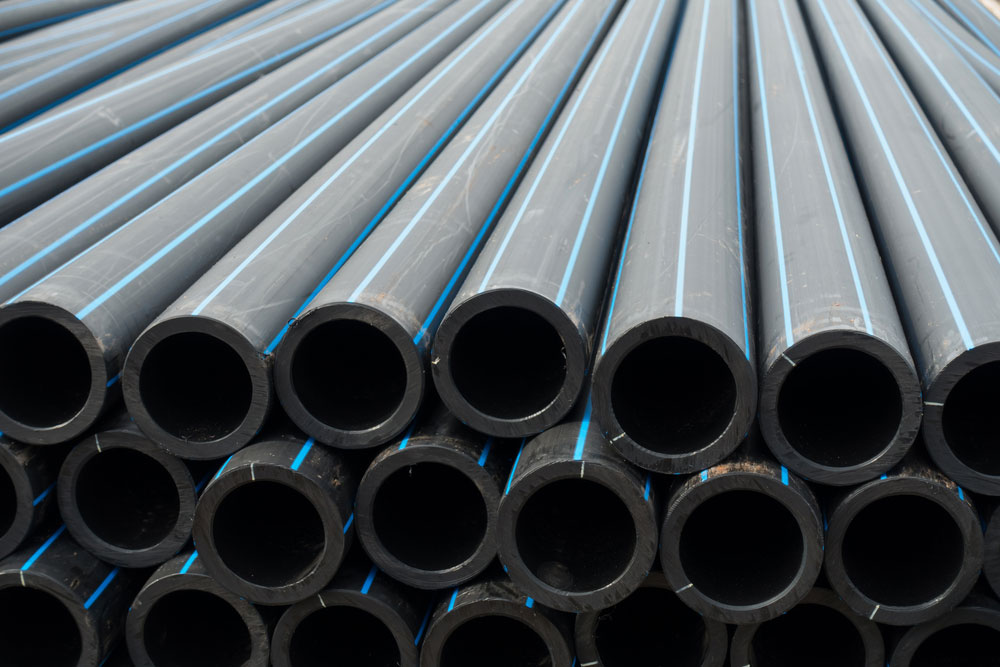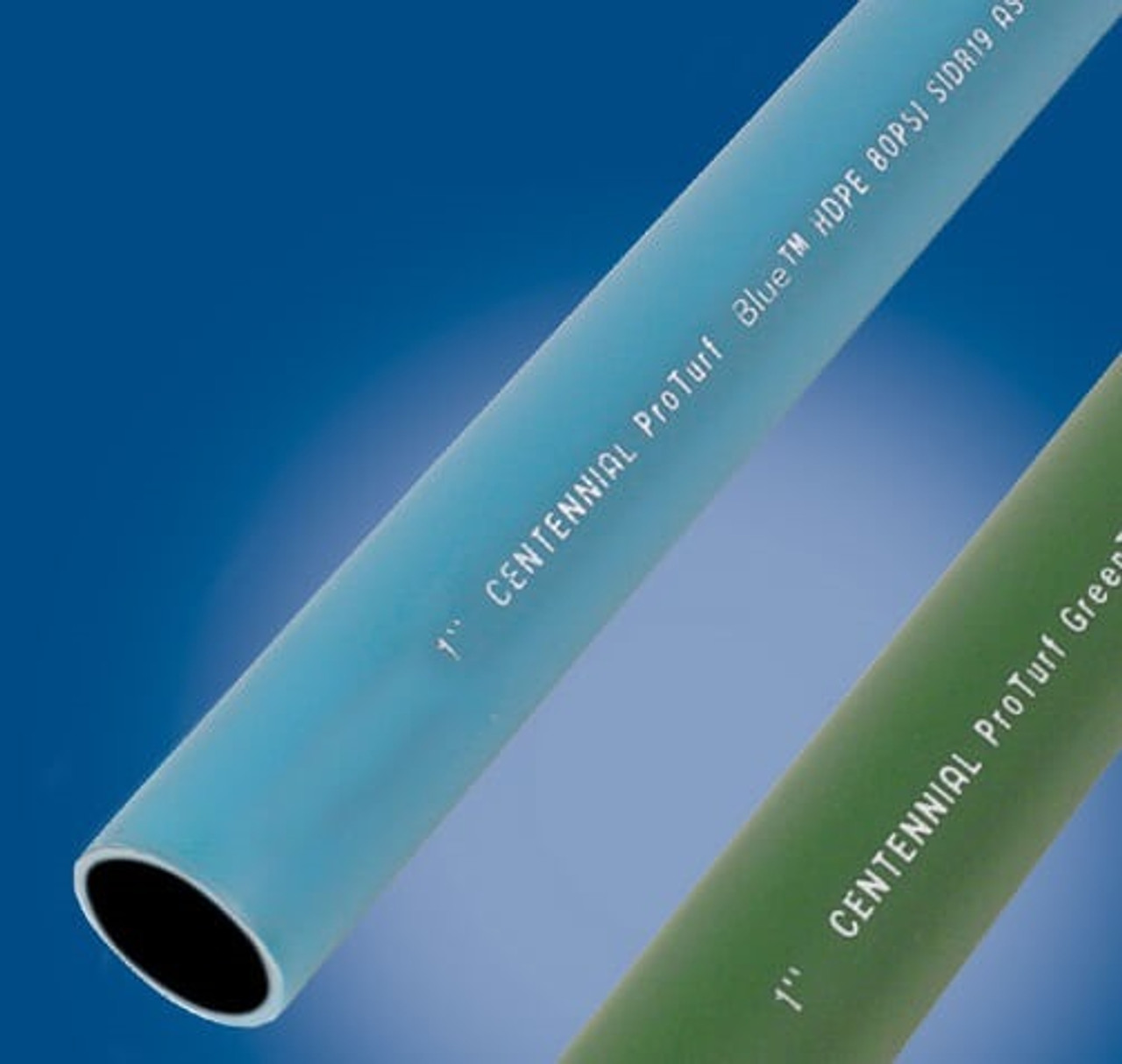Explore the Manufacturing Process Behind High-Quality HDPE Pipe and Its Applications
The manufacturing process of high-grade HDPE pipelines is complex and systematic. It starts with the choice of basic materials that enhance efficiency. Following this, ethylene undergoes polymerization to develop material, which is after that formed with extrusion. Quality control is critical, making certain that the final product meets stringent standards. The trip of HDPE pipes does not end with manufacturing. Their applications throughout numerous industries disclose a broader significance worth analyzing.
Understanding HDPE: Qualities and Advantages

High-density polyethylene (HDPE) is a functional thermoplastic known for its resilience and resistance to various environmental variables. This product shows outstanding tensile toughness, making it suitable for demanding applications. Its low-density structure adds to a light-weight product, facilitating ease of taking care of and installation. HDPE likewise showcases impressive resistance to chemicals, which lessens degradation when subjected to severe substances.
The product's reduced dampness absorption even more improves its long life, making it perfect for use in pipelines and tank. Furthermore, HDPE is resistant to ultraviolet (UV) radiation, making sure that products keep their integrity also when exposed to sunlight. Furthermore, its versatility permits the creation of intricate forms without endangering strength. The eco-friendly nature of HDPE, usually originated from recycled materials, contributes to its appeal, advertising sustainable methods in production. Overall, these buildings and advantages make HDPE a recommended choice for various industrial and consumer applications.
Basic Material Option for HDPE Production
The option of basic materials for HDPE production is essential to validate the end product satisfies the wanted requirements and quality requirements. High-density polyethylene (HDPE) is mainly created from polymerized ethylene, derived from fossil fuels such as natural gas or crude oil. The quality of these feedstocks considerably affects the mechanical and thermal properties of the final HDPE.
Ingredients also play a significant duty in boosting HDPE's efficiency, including antioxidants, UV stabilizers, and colorants, which improve sturdiness and resistance to ecological aspects. The option procedure need to take into consideration not only the chemical structure of the raw materials however also their processing attributes to guarantee effective production.
The sourcing of raw materials should focus on sustainability and compliance with environmental regulations, as liable techniques are imperative in today's market. Ultimately, cautious raw product choice lays the structure for generating top quality HDPE pipelines ideal for diverse applications.
The Extrusion Refine: Forming HDPE Pipe
The extrusion process plays a crucial function in shaping HDPE pipes, starting with meticulous material prep work strategies that ensure optimal flow and consistency. Equally important is the layout of the die, which directly affects the last dimensions and surface area top quality of the pipe. With each other, these factors add greatly to the efficiency and top quality of HDPE pipeline manufacturing.
Product Prep Work Techniques
Effective manufacturing of HDPE pipelines starts with meticulous material preparation techniques, particularly the extrusion process. During this stage, high-density polyethylene material is first dried out to remove moisture, guaranteeing ideal circulation characteristics. The resin is after that fed into the extruder, where it undergoes heating and melting, changing into a viscous state. This home heating process is thoroughly regulated to keep the product's honesty and efficiency. The liquified HDPE is required with a die, shaping it right into a constant pipeline form. Correct temperature level monitoring during extrusion is essential, as it straight impacts the material's residential properties and the last product high quality. When shaped, the HDPE pipeline is cooled and reduced to defined lengths, ready for succeeding handling and applications.
Die Design Relevance
Precision in die layout plays a necessary role in the extrusion procedure of HDPE pipes. The die functions as the final shaping tool, directly affecting the pipeline's measurements, wall surface thickness, and surface finish. A well-designed die guarantees uniform material flow, reducing issues such as irregularities and weak points. The geometry of the die should be optimized to suit the details homes of HDPE, including its viscosity and thermal actions during extrusion. Additionally, the cooling price of the material as it goes through the die can markedly affect the pipe's architectural stability. Subsequently, investing in innovative die technology is important for makers intending to generate top notch HDPE pipelines that fulfill sector standards and client assumptions.
Top Quality Control Actions in HDPE Production
Numerous aspects affect the top quality of HDPE pipeline manufacturing, effective quality control steps are crucial to assure consistency and integrity in the last item (Texas hdpe pipe manufacturer). Secret top quality control methods consist of rigorous material assessment, verifying that the raw polyethylene satisfies established criteria for pureness and density. Throughout the extrusion procedure, parameters such as temperature, stress, and cooling time are closely checked to maintain dimensional precision and structural honesty
On top of that, post-production testing is vital; manufacturers often conduct hydrostatic tests to examine the pipeline's strength and resistance to pressure. Aesthetic examinations for surface area defects additionally enhance quality guarantee. Accreditation from pertinent standards organizations, like ASTM or ISO, provides an extra layer of trustworthiness. By carrying out these comprehensive quality assurance actions, producers can reduce flaws, improve performance, and guarantee that the HDPE pipes satisfy the specific requirements of numerous applications, ultimately causing consumer complete satisfaction and count on the item.
Applications of HDPE Pipe Across Industries
HDPE pipelines are used throughout various markets as a result of their durability and adaptability. In water circulation systems, they ensure efficient distribution, while in wastewater administration, they provide reputable options for waste transport. Additionally, farming watering networks profit from HDPE's resistance to deterioration and flexibility, making it a suitable choice for modern farming get more info practices.

Water Distribution Equipments
A significant number of sectors count on high-density polyethylene (HDPE) pipelines for efficient water circulation systems. Known for their durability and resistance to corrosion, HDPE pipes are extensively used in municipal water networks, farming irrigation, and commercial applications. Their light-weight nature facilitates simple handling and installment, decreasing labor prices and time. In addition, HDPE pipes can fit various pressure levels, making them ideal for both low and high-pressure systems. Texas hdpe pipe manufacturer. The flexibility of the product permits seamless assimilation right into existing framework, reducing the need for considerable excavation. HDPE's resistance to chemical seeping warranties that the water delivered stays secure and tidy, making it a suitable choice for preserving the quality of drinkable water throughout numerous fields.
Wastewater Administration Solutions
Reliable water circulation systems also lead the way for cutting-edge wastewater monitoring solutions, where high-density polyethylene (HDPE) pipes play a considerable duty. Renowned for their resilience and resistance to rust, HDPE pipes are ideal for transporting wastewater in various setups. Their adaptability permits easy setup in complicated atmospheres, decreasing the requirement for considerable excavation. Furthermore, HDPE's smooth indoor surface decreases friction, boosting circulation rates and effectiveness. These pipelines are also immune to chemical leaching, ensuring that pollutants do not jeopardize the surrounding setting. Industries, districts, and therapy centers increasingly rely upon HDPE pipes for their integrity and durability, making them a recommended selection for modern wastewater monitoring systems. This flexibility highlights the important significance of HDPE pipes across many applications.
Agricultural Watering Networks
Agricultural irrigation networks benefit considerably from the use of high-density polyethylene (HDPE) pipes, which give efficient and trusted water distribution to crops. HDPE pipelines are light-weight, making them simple to carry and install, while their adaptability enables numerous arrangements in diverse surfaces. These pipelines demonstrate superb resistance to deterioration, chemicals, and UV radiation, guaranteeing toughness in harsh farming environments. In addition, their smooth interior surface area decreases friction loss, maximizing water circulation and lowering energy expenses linked with pumping. The longevity of HDPE pipes, usually exceeding 50 years, contributes to lower upkeep and replacement expenses. As a result, farmers significantly rely on HDPE pipes to boost watering effectiveness and advertise lasting farming techniques, inevitably bring about boosted crop returns and resource preservation.
Future Patterns in HDPE Pipe Modern Technology
As the need for lasting and reliable facilities expands, developments in HDPE pipeline modern technology are poised to change various markets. Arising fads consist of the combination of smart technologies, such as sensors and IoT abilities, which facilitate real-time surveillance of pipe problems, lowering maintenance costs and stopping leakages. Additionally, the growth of advanced production techniques, such as 3D printing, is enabling the manufacturing of complex, customized pipeline styles that cater to certain project requirements.
Furthermore, the emphasis on recycling and round economic situation techniques is driving the development of HDPE pipes made from recycled products, improving sustainability. Improved jointing approaches, such as electro-fusion and mechanical installations, are additionally improving installation performance and integrity. Ultimately, the growing emphasis on ecological guidelines is pressing manufacturers to adopt greener production procedures, making certain that HDPE pipes not only fulfill market requirements yet additionally cultivate a more sustainable future for infrastructure development.
Often Asked Concerns
Exactly How Does HDPE Compare to Various Other Plastic Materials?
HDPE surpasses numerous other plastic materials regarding longevity, chemical resistance, and versatility. Its reduced thickness and high tensile strength make it perfect for various applications, usually going beyond choices in both performance and durability.
What Are the Environmental Influences of HDPE Manufacturing?
The ecological impacts of HDPE production consist of greenhouse gas exhausts, power usage, and prospective contamination from producing procedures. Additionally, incorrect disposal can bring about soil and water contamination, raising problems about long-lasting ecological impacts.
Can HDPE Pipeline Be Recycled?
Yes, HDPE pipelines can be recycled. Several facilities approve used HDPE for handling, changing it right into brand-new items. This recycling adds to sustainability efforts, minimizing plastic waste while preserving resources and power in the manufacturing cycle.
What Is the Life-span of HDPE Pipeline?

How Do Temperature Variations Affect HDPE Pipe Efficiency?
Temperature variants significantly impact HDPE pipeline efficiency, impacting adaptability and strength. Heats can cause softening, while low temperatures may cause brittleness, eventually influencing the pipeline's durability and suitability for different applications in diverse atmospheres.